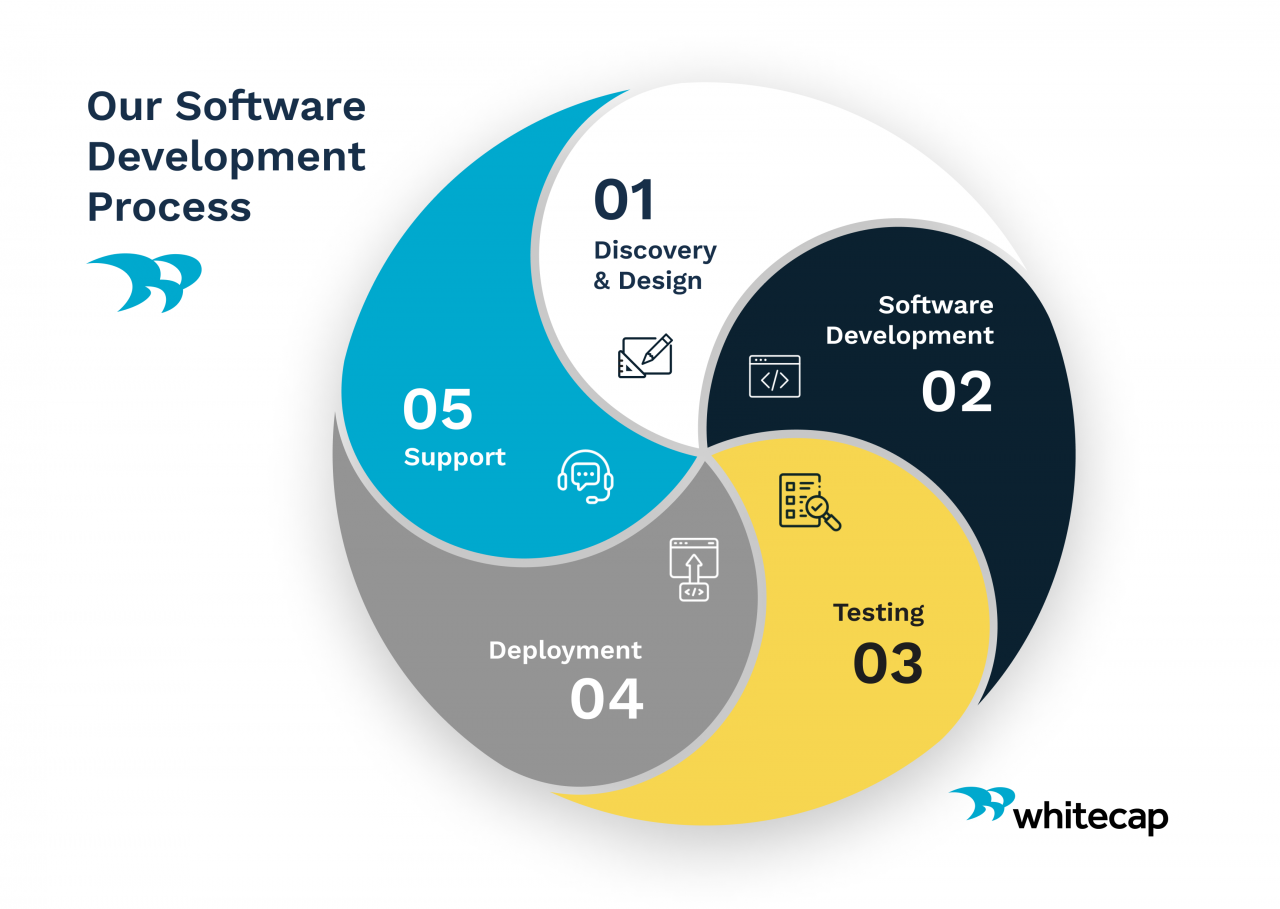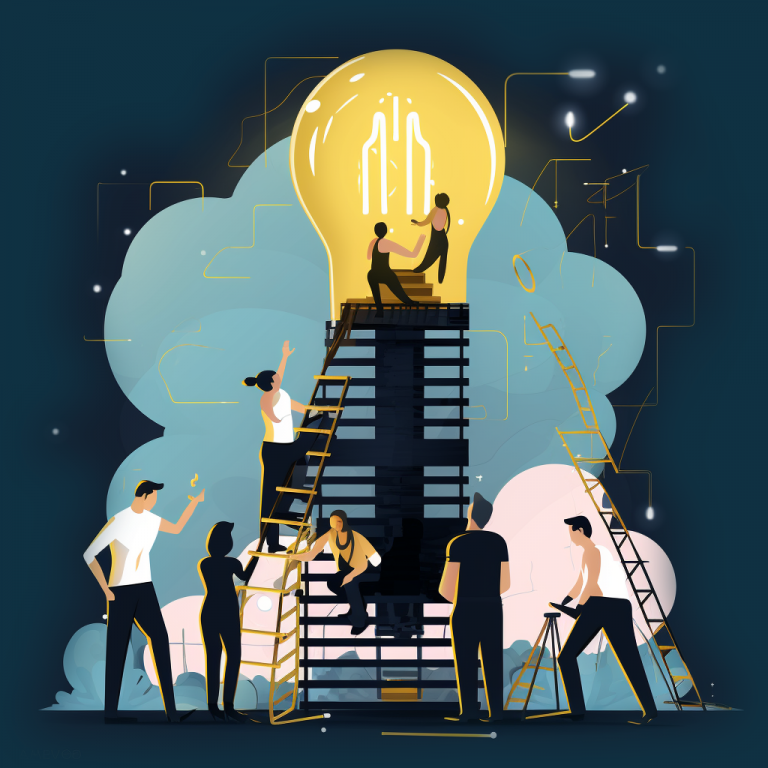Our software development process is centered around you and your unique business needs.
We begin each project with a detailed discovery and software design. The development phase is generally structured into iterative phases following either Agile or Waterfall development principles depending on your preference. And after deployment, we are there to train and support your team whenever you need.


Discovery & Design
Through a series of collaborative meetings, we get to know your business and customers. We do a deep dive into your stakeholders, processes, existing technology, short-term and long-term objectives.
We find that these discovery sessions greatly assist our clients in clarifying their ideas and needs as we go about designing the software together as a team.
The result of these meetings are well-documented system specifications and requirements that includes:
- The purpose of the software and how it helps meet your business objectives
- Detailed functional requirements of the software
- Integration requirements with other IT systems
- Customer journey mapping
- User experience (UX) design
- User interface (UI) wireframing & mockups
- Branding and overall look and feel
- Accessibility requirements
- Identification of administration and operational issues
- Technical architecture
- Security requirements
- Hosting requirements
Software Development
We are very flexible, and our development process can be adapted as needed. We’re equally comfortable developing using either Agile or Waterfall principles, or a mix of both.
Agile principles are all about being collaborative, flexible, and adaptive. Development is done in short sprints, encouraging teams to regularly show off their work and gather feedback so that they can adapt to change quickly.
Waterfall methodology is a more sequential development process. As each pre-planned stage is completed, the development team moves on to the next step in the process until the project is completed and launched.
For larger projects, our approach is typically iterative. Meaning, we break it up into phases, where each phase involves the production and deployment of a subset of the overall system. Our experience is that iterative development serves to enhance the feedback cycle for the project and helps ensure that what gets delivered is more closely aligned with continually evolving business requirements.


Testing
Quality assurance (QA) testing is an ongoing part of our software development process. This is a crucial step which should not be missed in any software development project.
It’s designed to identify and fix any errors and usability issues before the software is deployed for use by your customers or employees. In short, it’s how we make sure the software is working as it should, will meet all your requirements and is of the highest quality.
Some of the things we look at during testing:
- Finding and fixing errors, bugs, and redundancies
- Ensuring that all workflows, automations, integrations are working as intended
- Making sure the UI and UX are seamless
- Compliance with accessibility standards
- Load and stress testing
Part of the software testing phase includes seeing how the software performs in the real world by its intended users. This is called User Acceptance Testing (UAT) and it ensures your users are getting exactly the software they want.
Deployment
This stage typically involves a final round of detailed testing and user training before your software is finally released into the production environment.
We’re not just going to hand over your new software and wish you luck. We will provide all the training and documentation your team needs to ensure a successful launch.


Support
Whitecap offers three levels of support to meet your specific needs. Whether you require ad-hoc assistance, standard business hour support, or round-the-clock 24x7 premium support, we have you covered. Our dedicated team of experts is committed to providing timely and efficient solutions to keep your applications and infrastructure systems running smoothly.
In addition, we offer the following managed services for many of our customers:
- Cloud Computing/Hosting Management
- Cybersecurity
- Systems Administration
- Infrastructure Management
- Network and Server Management
- Software and Hardware Installation and Maintenance/Management
- Data Backup and Disaster Recovery
- Helpdesk and Technical Support
- Remote Monitoring and Management
- Infrastructure-as-a-Service
- Managed end-user services
- On-site IT services